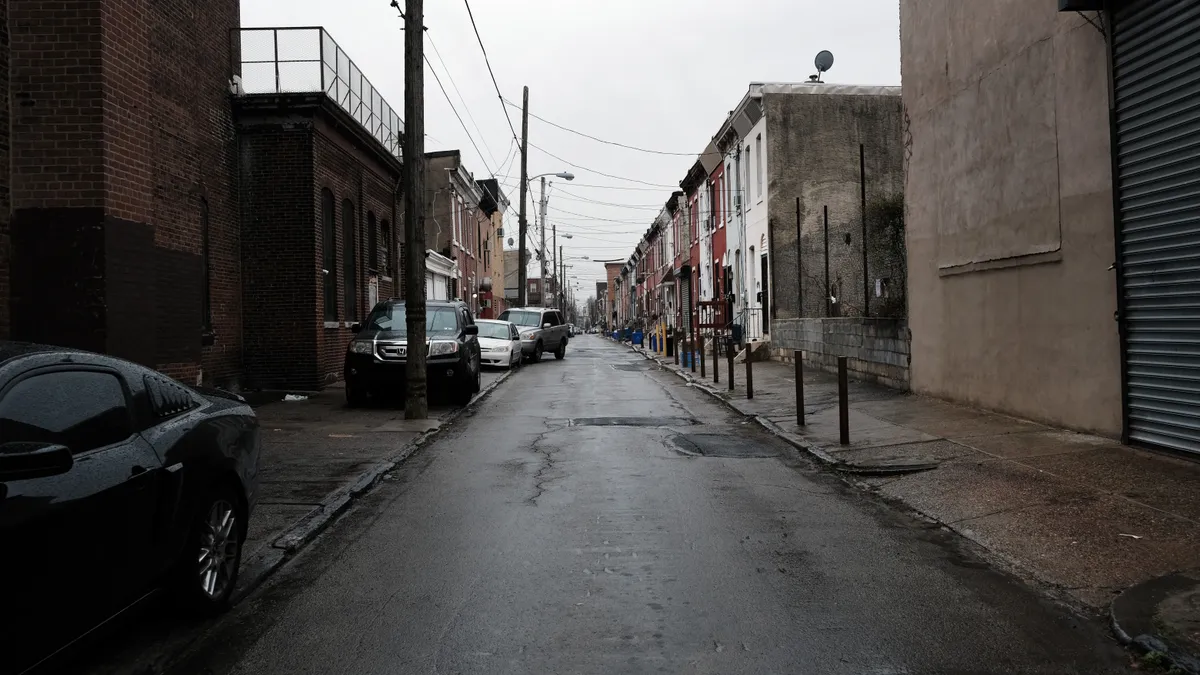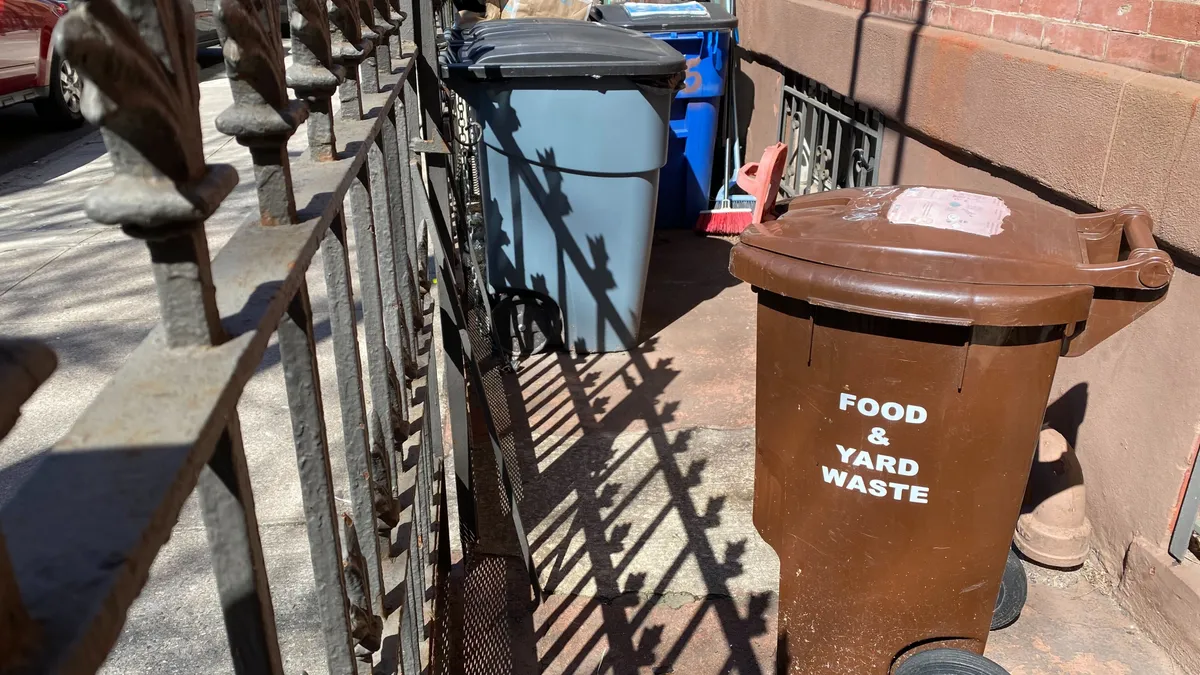At the height of the pandemic last fall, Philadelphia resident Eboni Ann Jones fell on hard times. Jones, a single mother who works for Pennsylvania’s Medicare program, learned she would need surgery that would require her to miss work. Facing unexpected medical bills while running short on her normal income, Jones thought her only options were skipping her rent payment or paying late.
"It took a real toll on me," Jones said. "I didn’t want to face eviction."
Jones’ story has been an unfortunate but familiar one throughout the pandemic. Estimates vary, but throughout the coronavirus crisis, research indicates that 29% to 43% of U.S. renters have faced the prospect of losing their homes. Job losses, the disease itself, and already precarious living situations combined to leave a large swath of tenants vulnerable to eviction.
Jones was one of the lucky ones. As a Philadelphia resident, she benefited from a program that brings together struggling tenants and landlords in a mediation process as one part of a multifaceted eviction diversion effort. The city’s unique take on eviction diversion has supported renters and landlords alike amid the pandemic and its financial challenges.
In a normal, nonpandemic year, the city files around 20,000 annual evictions. "Philadelphia is the nation’s largest poor city," said Helen Gym, a city council member and early sponsor of the program. "When you look at a city like ours that processes that many evictions, it becomes a crutch rather than a means to resolve disputes."
Knowing that the pandemic could cause evictions to spike, Gym helped enact one of the nation’s most aggressive plans for fighting evictions in June 2020. The Emergency Housing Protections Act (EHPA) provides several safeguards for tenants, including mediation between the landlord and tenant, a temporary waiver of late fees and mandatory multimonth repayment agreements. The mandatory mediation requirement is currently set to expire on June 30, but Gym’s office is hopeful that it will be extended and potentially made permanent.
For the time being, those protections have helped: Philadelphia saw eviction numbers fall to 4,500 in 2020. Gym sees this as a beginning for lasting, meaningful change. "It’s our goal to keep numbers low," she said. "We believe we can end poverty-based evictions. If we can, anyone can."
While Jones said she is still not quite caught up with her bills, the federal rent-relief money she received has helped her gain her footing. "After going through mediation, I received a check that covered back rent for two months," she said. "I’ve been able to cover my expenses, and as long as my kids have food, clothing and the basics, I’m OK."
Bringing tenants, landlords to the same table
Alieza Durana, spokesperson at the Princeton Eviction Lab, is a fan of the work Philadelphia is doing to keep renters in their homes.
"Philadelphia now requires all property owners to apply for rental assistance, wait 45 days, and be offered mediation before filing for eviction," she said. "In many other parts of the country, you can still file an eviction, turn down rental assistance, and kick someone out immediately, during a public health and economic crisis. Slowing down the process, and providing legal and material assistance, is preventing thousands of tenants in one of the nation’s poorest big cities from risking homelessness."
Philadelphia’s efforts have combined resources and options, including the federal moratorium on evictions, emergency rental assistance, and the sustained commitment to mediation.
One of those resources is the Philadelphia Eviction Prevention Program (PEPP), which was spearheaded in 2017 and includes services like a tenant hotline, court navigators, tenant’s rights workshops and pro bono representation.
Meanwhile, the EHPA program’s protections include a mandate through the end of June that landlords communicate information to tenants about the program’s services. When it’s time for mediation, the two parties join a conference call with a trained mediator and work toward a solution that satisfies both parties. If a tenant doesn’t take up the offer of mediation, the landlords can then proceed with the eviction process, barring any moratoriums.
Mark Treskon, senior research associate at the Washington, D.C.-based Urban Institute, said the Philadelphia program is a standout on numerous levels. "For one, it has a lot of stakeholders involved who were committed to getting it up and running," he said. "You’ve got city government, the courts and nonprofits all working together, sharing resources, data and outreach. That’s a model we haven’t seen before."
It’s unique that the diversion program brings landlords to the table, Treskon said. "It opened the possibility for landlords to get something out of the effort, and that’s going to be critical if programs like this are going to succeed moving forward."
Not all landlords were happy with the idea of mandatory mediation when it first became available, though. HAPCO Philadelphia, the association representing landlords of low- to moderate-income housing, launched a federal lawsuit against the EHPA. Ultimately, the judge in the case favored upholding the municipal order and HAPCO withdrew its suit.
"Mediation is mediation," says Greg Wertman, president of HAPCO. "Small landlords were doing mediation well before it was mandatory. We can’t afford to go to court and would rather work something out with tenants before that stage."
That said, Wertman would rather see mediation made voluntary. "If someone just destroyed my housing unit or breached the lease, it’s not something to mediate," he says. "But it looks like [mandatory mediation is] here to stay, so we’ll work with it."
Marie Zinni, a Philadelphia property manager who oversees around 100 properties, said she sees pros and cons to the program. "The best part is that it opened up a line of communication from us to the tenants," she said. "I learned that the system worked. Of course we had a few reluctant tenants, but the majority cooperated with the program."
Of the landlord/tenant pairs that participated in mediation, according to Gym, 70% to 80% came to a resolution. "Only 5% to 6% of landlords ultimately end up pursuing eviction," she said. "In between, they seek to exist without eviction. It becomes a more amicable relationship."
Zinni said the mediation allowed her to see the human element of the situation. "Many times, tenants don’t want to admit that they’ve been sick or lost their jobs," she said. "It’s good to hear what their issues are and find ways to help them."
Still, not everything has worked perfectly. "I’m still waiting on federal-level money to cover the lack of rent coming in," Zinni said. "Property owners need help, too, right now."
Anabeth Rosado is one of the housing counselors who has worked with tenants and landlords through the mediation process in Philadelphia. Rosado saw some initial reluctance from landlords but said that has evolved. "Once they saw some successes and understood it could be helpful, they even encouraged other landlords to participate," she said.
From Rosado’s viewpoint, mediation has been incredibly helpful, especially for tenants. "We’ve been able to facilitate solutions that help everyone, like budgeting for the tenants, or payment plans that ensure the landlords will eventually receive payment,” she said. “But there’s still more that can be done going forward."
An uncertain future
Recently, a federal district court judge in Washington, D.C., ruled the CDC’s eviction moratorium was unconstitutional, leaving the future of emergency housing laws in question.
But Treskon with the Urban Institute said that as funding tapers off and moratoriums end, housing advocates will keep pushing for longer-term solutions. "The pandemic served as a tipping point," he said. "There are lots of calls to implement better practices and collaborative programs to find answers that work for everyone."
Those changes will take place on the local level, Treskon predicts. "If you look around the country, there's a wide disparity from one location to another," he said. "In Mississippi, for instance, it’s very easy to evict. In D.C., however, there are plenty of protections in place for tenants."
Durana with Eviction Lab said the group has also seen many concerning trends around the country. "Unfortunately, we're receiving reports of tenants receiving eviction notices or having their cases conclude with eviction before rental assistance reaches them," she said. "For example, we're still seeing many eviction cases filed in Texas, whereas [as] of last month, only about 250 households out of more than 70,000 applicants have received assistance so far."
Currently, only 15 states have tenant eviction protections in place, with some of those protections ending this summer. "Now is the time to strengthen, not weaken, what little protections stand between families staying housed or being kicked out of their homes," Durana said. "When tenants are unable to pay rent, it has negative downstream effects for property owners."
Those shortcomings are something Gym keeps front and center when discussing the eviction diversion program. Ultimately, she said, the program aims to restore a sense of connection between landlords and tenants, something that is often lost in the age of big, corporate landlord organizations.
"These are largely frayed relationships with no communication between them," she said. "At the end of the day, eviction is costly for landlords, too, who must pay for lawyers and court fees, then find new tenants. It becomes an economic drag on society. We see the mediation program as a different type of investment, one with a healthier outcome for everyone."
Meanwhile, for renters like Jones, the mediation program has made a real difference in navigating an already challenging year.
"At first, I didn’t believe this program could be real," she said. "If I hadn’t been contacted, I wouldn’t have known it existed. The experience was a lifeline for me."
Correction: The story provided an incorrect date for the expiration of mandatory mediation in Philadelphia's eviction diversion program. It expires June 30.



















